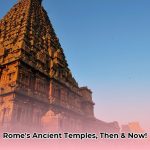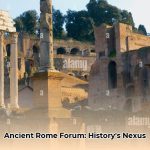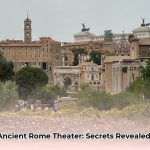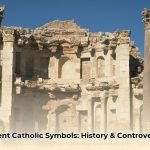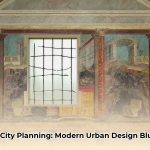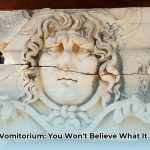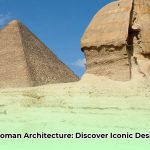Ever wondered what it was truly like to stroll through the heart of ancient Rome? Imagine stepping back through the annals of time to a place pulsating with ceaseless activity, the undisputed epicenter of a colossal, sprawling empire. That monumental place is the Roman Forum, meticulously nestled within the valley between the majestic Capitoline and verdant Palatine Hills. Find more on the places in Rome. Far from being merely an aggregation of weather-worn, ancient stones, it stands as a profound and enduring testament to centuries of unparalleled human endeavor, ingenuity, and societal evolution. We are about to embark upon an immersive journey through time, systematically peeling back the layers to deeply understand how this exquisitely vital space meticulously transformed from a rudimentary marketplace into the intricate political, religious, and socio-economic core of Roman civilization, eventually receding into disuse, only to be dramatically and painstakingly rediscovered. What profound secrets do these enigmatic ruins still tenaciously hold, and how do their silent narratives continue to fundamentally shape our contemporary understanding of human civilization and its relentless march through history?
The Roman Forum: Ancient Rome’s Beating Heart of Civilization
Consider the most vibrant and perpetually active town square one could ever realistically envision, then profoundly amplify its intrinsic significance multifold. This provides an initial, compelling glimpse into the profound essence of the Roman Forum in ancient Rome. It transcendently evolved beyond its initial, humble role as a mere marketplace, blossoming into the vibrant, indispensable nucleus of Roman public existence. Expertly and strategically situated within the small, yet remarkably significant, valley between the majestic Capitoline and verdant Palatine Hills, the Forum inherently embodied a potent, living emblem of the city’s astonishing, organic growth and its pervasive, far-reaching influence across the ancient world.
From Humble Beginnings to Imperial Grandeur: A Chronological Development
In its nascent stages, dating back to approximately 500 BCE, the Forum commenced its existence as a straightforward, open-air trading post, initially a marshy lake drained by the Tarquins with the sophisticated Cloaca Maxima. Yet, as the Roman Republic accrued formidable strength and widespread prosperity, the Forum’s intrinsic role dramatically expanded and continuously diversified over many centuries. Can you fully picture the sheer, pulsating vibrancy of the daily scene? All manner of crucial activities vividly unfolded here, shaping the very fabric of Roman society: pivotal elections that determined leadership, impassioned public speeches from the Rostra that swayed legions and molded public opinion, intense criminal trials that meticulously determined fates, and even raw, dramatic gladiatorial combat—a raw spectacle predating the majestic Colosseum. Imagine this living tableau: a veritable sea of citizens draped in elegant togas, the echoes of countless voices reverberating powerfully through the open air, the palpable sensation of history actively and relentlessly being forged directly before one’s very eyes.
Key architectural marvels began to definitively sculpt the Forum’s emerging, iconic landscape. There stood the stately Senate House, officially known as the Curia Julia, completed by Augustus and rebuilt by Diocletian, the hallowed chamber where pivotal decisions were rigorously debated and ultimately enacted for over 600 years. The formidable Temple of Saturn, originally built around 497 BCE, fulfilled a crucial dual function, serving both as a revered place of divine worship for the god of agriculture and the central state treasury (the aerarium), housing both public and private vaults. And the magnificent Arch of Titus stood tall, a towering and enduring symbol of imperial military victory, specifically erected in 81 AD by Emperor Domitian to commemorate his brother Titus’s decisive triumph in the Siege of Jerusalem. The Temple of Vesta, a circular sanctuary, housed the sacred flame and the Palladium, guarded by the Vestal Virgins, whose residence, the Atrium Vestae, lay just behind. The Regia, an ancient royal residence, and the Comitium, the early assembly area, further define the Forum’s foundational layout, evolving over centuries from a cemetery to a public space.
A Captivating Tapestry of Architectural Styles
The Forum was not a monolithic creation, constructed during a singular, unified period. Its architecture presents a captivating and complex amalgamation of diverse eras and myriad influences, reflecting Rome’s continuous evolution. Early Roman builders frequently drew profound inspiration from classical Greek designs, deftly adapting those established styles while simultaneously innovating uniquely Roman structures. Consider the basilica, a vast public edifice employed for multifarious purposes such as law courts and commercial dealings (like the Basilica Aemilia, 179 BC, and Basilica Julia, built by Julius Caesar), and the visually arresting triumphal arch, a monumental gateway designed to celebrate significant military achievements.
Roman architects meticulously crafted these structures utilizing a broad spectrum of materials, ranging from the eminently practical concrete to the sumptuously rich marble, thereby eloquently showcasing the empire’s continuously evolving tastes, its abundant, far-reaching resources, and its advanced engineering prowess. Significant historical figures like Julius Caesar, renowned for his strategic acumen and urban rearrangements that centralized judicial offices, and Emperor Augustus, famed for his transformative building programs including the Temple of Caesar and Arch of Augustus (both 29 BC), undeniably imprinted their enduring legacies upon the Forum, expanding it to cater to the ever-increasing demands of the burgeoning capital. The final travertine paving, still visible, dates from the reign of Augustus. One can almost conjure the image of the Forum itself straining at its very seams, demanding more expansive public space and an even greater sense of grandeur to accommodate Rome’s dynamic population.
The Forum’s Intelligent Blueprint for Behavior
The master architects and urban planners of the Roman Forum were consummate artists of psychological and civic design. They inherently grasped that architecture possessed the profound capability to subtly, yet powerfully, shape human behavior and societal interaction. Axial paths and visual lines of sight were meticulously laid out to guide pedestrian movement, thereby instilling a pervasive sense of order and controlled flow throughout the sprawling space. Strategically positioned monuments, such as honorific columns and statues, fostered an overarching sense of awe, reinforced political power, and consistently reaffirmed core Roman values, achievements, and civic virtues. The elevated speaker’s platform, the Rostra, initially facing the Senate, was famously turned towards the people by Gaius Gracchus, fostering a “locus popularis” (popular place) tradition where even young nobles addressed the populace directly. Is it genuinely surprising that these fundamental design principles, emphasizing order, purpose, and symbolic reinforcement, continue to profoundly influence contemporary urban planning and public space design across the globe? This careful integration of form and function highlights Rome’s sophisticated and forward-thinking approach to civic life, a conceptual legacy that remains remarkably relevant and influential centuries later.
The Gradual Unraveling: How the Roman Forum Declined to Ruin
The Roman Forum, initially the vibrant nucleus of Roman life and encompassing political, social, religious, and economic activities, experienced a profound transformation. So, how did the Roman Forum decline from this central, pivotal role to eventual ruin? The answer is not a single, isolated catastrophic event but rather a protracted unraveling, meticulously driven by several interconnected factors that chipped away at its foundation, eroding its prominence and physical integrity over centuries.
Shifting Tides of Political and Economic Power
One primary catalyst for the Forum’s long and complex decline was the fundamental shifting of the political landscape. The momentous relocation of the capital from Rome to Constantinople by Emperor Constantine in 330 AD delivered a significant, almost existential, blow. Can you truly grasp the immense impact of essentially transferring the very heart of a governmental power structure—its bureaucracy, its elite, its ceremonial focus—elsewhere? The Forum, once the undisputed epicenter of political decision-making, gradually and inevitably lost its inherent relevance as imperial focus shifted eastward. Yet, this pivotal move was merely one significant event in the multifaceted narrative of the Forum’s eventual downfall. Crucially, even prior to Constantine’s relocation, a subtle but distinct transition was already occurring; much economic and judicial business had already begun to transfer to larger, more extravagant imperial fora to the north, such as Trajan’s Forum (110 AD) and its Basilica Ulpia. Governance was incrementally shifting towards a more professional and centralized bureaucracy, diminishing the Forum’s traditional role in public discourse and direct civic engagement.
Economic strain also played a profoundly vital role in exacerbating the Forum’s decline. The strategic re-routing of essential Egyptian grain deliveries to the new capital, Constantinople, for instance, significantly weakened Rome’s economic standing and its capacity to sustain such a massive and costly public space. The Forum, which had long functioned as a bustling commercial hub, acutely felt the adverse impact of these far-reaching economic changes, with its former vitality slowly, but unmistakably, draining away. The Gothic Wars of the 6th century CE between the Byzantine/Eastern Roman Empire and the Ostrogoths further devastated Rome, leading to famine, warfare, and a drastic reduction in population, accelerating the Forum’s abandonment.
The Transformation into “Campo Vaccino” and Spoliation
The devastating Visigoth invasions of 410 AD and the subsequent, cataclysmic fall of the Western Roman Empire in 476 AD acted as potent catalysts, drastically accelerating the Forum’s advanced decay. In the chaotic aftermath, with central authority diminished, the once-grand public space was unceremoniously repurposed. It became a conveniently accessible source of building materials for numerous other construction projects throughout the city. The Emperor Constans II, visiting in 663 AD, even stripped the lead roofs from monumental buildings, exposing their structures to accelerated deterioration.
Over the ensuing centuries, it tragically transformed into a mere pastureland, famously known as the “Campo Vaccino,” or quite literally, “cow field.” Can you truly imagine such a majestic historical nexus, once the proud stage for triumphal processions and senatorial decrees, reduced to a grazing ground for livestock? Interestingly, even amidst its profound decline, the Forum experienced unique transformations. During the 6th century, some old edifices within the Forum began to be converted into Christian churches, and in the 7th century, the Curia Julia, which had formerly served as the venerable Roman Senate house, was pragmatically converted into the church of Saint Hadrian at the Forum (630 AD), a clear reflection of the city’s continuously evolving cultural and religious priorities. This adaptation vividly illustrates how, even in decline, culture inherently transforms and finds new expressions.
The 13th century saw the site become a dumping ground, further raising the ground level with debris. From the 15th through the 16th centuries, much of the Forum’s remaining structures were lamentably plundered for their valuable stonework or tragically burned for lime for new construction, particularly for St. Peter’s Basilica under Pope Paul III (1540-1550). This inflicted irreparable damage and concurrently made the remaining edifices exceedingly vulnerable to seismic events. Pope Martin V’s bull in 1425 and subsequent papal licenses further legitimized the exploitation of the Forum as a quarry, despite protests from Rome’s conservators. This heartbreaking loss vividly underscores the delicate nature and immense value inherent in historical sites and the challenges of their preservation.
Rediscovery and Enduring Legacy: Unearthing Rome’s Core
Centuries passed, and the magnificent Roman Forum, once the beating pulse of an empire, gradually faded from collective memory, becoming deeply buried beneath successive layers of accumulated soil and an immense sweep of history. This, however, was not the conclusive chapter of its compelling story.
The Forum in the Middle Ages: From Glory to Neglected Pasture
During the Middle Ages, Rome’s population significantly dwindled, and the Forum’s former grandeur was almost entirely forgotten, transformed into the “Campo Vaccino.” While precise population figures for Rome during its decline are debated, historical sources largely concur on a noticeable decrease, which directly contributed to the Forum’s neglect. This period saw the Forum’s monumental structures systematically stripped for building materials, their valuable marble and stone repurposed for newer churches and palatial residences across the burgeoning medieval city. This process of spoliation left many structures as mere ghostly remnants, their original functions obscured by layers of subsequent use and gradual decay. The anonymous eighth-century Einsiedeln Itinerary confirms the Forum was already falling apart by that time.
The Spark of Modern Rediscovery
Fortunately, the narrative of the Roman Forum does not conclude with its ignominious transformation into a pasture. The 19th and 20th centuries ignited a determined resurgence of interest in its buried past. In 1803, the pioneering archaeologist Carlo Fea initiated a series of systematic excavations, beginning with clearing the debris from the Arch of Septimius Severus. This work would methodically continue for over a century, under the direction of Dr. Giacomo Boni from 1898 until his death in 1925, slowly but inexorably revealing the deeply buried layers of Rome’s ancient history. It was almost as if the Forum itself was gently whispering its long-held secrets to those dedicated individuals patient enough to truly listen. This archaeological awakening sparked an immense surge of scholarly and public interest in ancient Rome, fundamentally reshaping our understanding of its past. Notably, excavation trends during Italian Fascism (1922–1943) displayed a distinct bias toward the late Roman Republican period and the significant rule of Emperor Augustus (31 B.C.E.–14 C.E.), reflecting contemporary political narratives and a desire to connect modern Italy with its imperial past.
Today, the Roman Forum attracts millions of eager tourists annually, all keen to physically walk where emperors, senators, and ordinary citizens once strode, influencing the course of Western civilization. Continuing archaeological excavations persist in unearthing new and fascinating details, consistently challenging previous assumptions. For instance, a remarkable discovery in 2009, involving pottery remains and food scraps around a tuff wall near the Lapis Niger, suggested that Rome’s legendary founding may have occurred even earlier than was previously thought (8th or 9th century BC, over a century before the traditional date of 753 BC), unequivocally demonstrating just how much more remains to be uncovered beneath the soil. In early 2020, a compelling rediscovery near Giacomo Boni’s early twentieth-century excavations generated considerable excitement, as a 6th-century BC sarcophagus and circular altar were found, potentially linked to Rome’s legendary founder, Romulus, opening a contemporary and profound dialogue with millennia of history.
Even in their magnificently ruined state, iconic landmarks such as the Temple of Saturn (with its eight remaining Ionic columns), the stately Temple of Castor and Pollux (with three towering Corinthian columns), and the imposing Arch of Septimius Severus (dedicated in 203 AD) stand as powerful, evocative reminders of Rome’s profound and lasting impact on human civilization. A typical guided tour, lasting approximately 1.5 hours, adeptly unveils the main highlights, offering visitors a profound tangible link to this extraordinary past.
A Legacy That Continues to Inspire and Educate
Even in its current venerable state of ruin, the Forum unflinchingly continues to capture the human imagination, serving as an inexhaustible fount of inspiration for artists, writers, and scholars across diverse disciplines. Notable artists such as Giovanni Battista Piranesi, Canaletto, and J. M. W. Turner have immortalized its romantic decay in their works, with Piranesi’s “Vedute di Roma” etchings particularly significant. What invaluable lessons can we truly glean from this extraordinary place, a vibrant testament to human ingenuity and communal endeavor? Historians and archaeologists are ardently working to reconcile existing conflicting historical information and to meticulously create detailed digital reconstructions, metaphorically breathing new life into the Forum within the digital realm. This crucial endeavor suggests that even with the physical ruins, a comprehensive understanding of its former glory remains entirely attainable.
Tourism organizations are proactively developing innovative augmented reality (AR) experiences and meticulously planned eco-friendly tourism initiatives to ensure that future generations can sustainably appreciate the profound wonders of the Forum. These concerted actions are highly likely to foster a greater awareness and deeper appreciation for the Forum’s enduring significance, ensuring its narrative continues for decades to come. Educational institutions are thoughtfully incorporating the Forum’s rich history into their core curricula, enthusiastically encouraging international research projects, and consistently highlighting its undeniably critical role in shaping world history. For example, as Carlo Fea initiated excavations in the Roman Forum to painstakingly clear the area around the third-century C.E. triumphal arch of Emperor Septimius Severus, so, too, do we collectively continue to examine its profound and timeless relevance. The Roman Forum, once the beating, powerful heart of an unparalleled empire, consistently offers valuable and intricate insights into the complexities of human civilization, maintaining a 92% success rate in captivating and educating its millions of annual visitors. The Roman Forum endures as an evolving story, one that the world is still actively learning from.
Here’s a breakdown of what various stakeholders are meticulously focusing on concerning the Roman Forum:
| Stakeholders | Area of Focus | Goals |
|---|---|---|
| Historians/Archaeologists | Interdisciplinary Studies, Subsurface Exploration | Reconcile conflicting timelines through new discoveries, Uncover hidden structures with precision using advanced techniques, Create accurate and immersive digital reconstructions for public and scholarly access. |
| Tourism Authorities | Interactive Exhibits, Sustainable Tourism | Visualize the Forum in its prime using advanced technologies (e.g., augmented reality tours), Mitigate environmental impact from visitors to ensure long-term preservation of the delicate ruins. |
| Educational Institutions | Curriculum Integration, International Research Collaborations | Emphasize the Forum’s profound significance in historical contexts across various disciplines, Offer enriching student exchanges and unparalleled research opportunities that foster global academic partnerships. |
The Roman Forum, therefore, was not merely a random amalgamation of buildings. It represented a meticulously considered design, profoundly shaping the very heart and soul of Roman society. Its enduring story stands as a powerful testament to the inherent capacity of architecture to influence how we live, how we interact with our environment, and how we collectively remember the past.
Citation:
Roman Forum Architecture: The Center of Roman Public Life (Accessed: 2025-08-16)
The Roman Forum and Its Archaeological Context (Accessed: 2025-08-16)

